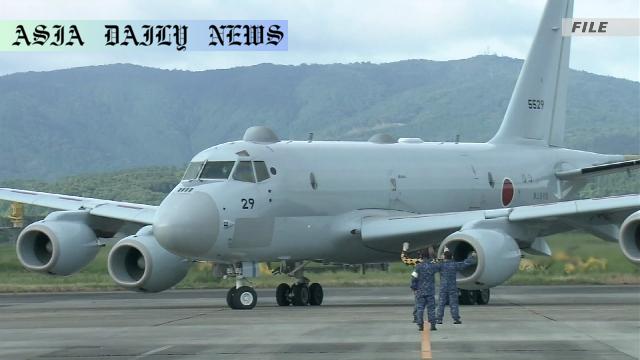P-1 patrol planes, vital in submarine detection, face functionality failures, design flaws, and corrosion, says Japan’s Board of Audit.
Japan’s P-1 patrol planes face issues with usability and functionality.
Aircraft engines corroded by salt air, reducing mission readiness.
Some planes cannot load specific weapons due to design flaws.
Board of Audit urges Defense Ministry to address these problems.

Introduction: Insights from the Board of Audit
The recent revelations from Japan’s Board of Audit on the operational challenges of P-1 patrol planes have raised serious concerns about the effectiveness and investment in these domestically developed aircraft. Meant to replace the US-designed P-3C aircraft, the P-1 planes were introduced with the promise of improved capabilities to enhance maritime security. However, the reported functionality issues, highlighted in the recent audit, underscore not only logistical challenges but also the pressing need to reassess Japan’s defense asset management strategies.
Operational Challenges: Corruption from Airborne Salt and Design Flaws
A glaring issue highlighted in the audit is the corrosion of P-1 plane engines caused by salt in the air during flights. This persistent problem compromises the planes’ functionality and readiness, leaving a significant portion of the fleet unfit for operations. Furthermore, design flaws in some aircraft render them incapable of loading certain types of weaponry, further diminishing their tactical advantages. While these planes were believed to symbolize Japan’s technological leap in defense, these revelations point to significant engineering and maintenance lapses.
Financial Concerns: High Costs, Limited Returns
The financial investment in the P-1 patrol plane project is substantial—35 planes deployed over fiscal years 1991 to 2023, with costs exceeding 1.77 trillion yen (approximately $12.2 billion). Such an investment demands accountability, especially when the usability of a critical defense asset remains constrained. The audit’s findings reflect a missed opportunity to maximize the potential of these aircraft, leading to questions about the efficacy of the acquisition and development processes. Moreover, replacement parts to address these issues are reported to be in short supply, further complicating the situation.
Implications for Maritime Security
Given Japan’s strategic geographical location and naval significance, a reliable fleet of patrol aircraft is critical for countering suspicious submarines and vessels. The compromised readiness of P-1 planes may undermine Japan’s overall maritime security infrastructure. Despite assurances from the Defense Ministry that alternative aircraft can fill the gap, dependency on older models or foreign replacements dilutes the purpose of developing a homegrown solution.
The Road Ahead: Implementing Reforms
Japan’s Board of Audit has directed the Defense Ministry and relevant agencies to improve the operational viability of the P-1 patrol planes. This directive includes addressing design flaws, tackling the engine corrosion issue, and ensuring a steady supply of replacement parts. While the ministry has pledged to ‘take the argument to heart,’ the road ahead demands proactive steps to not only rectify existing problems but also apply these lessons to future defense investments. Stakeholders must prioritize accountability, efficiency, and collaboration to regain both public trust and operational competency.
Conclusion: A Call for Strategic Reassessment
The revelations surrounding the P-1 patrol planes are a stark reminder of the challenges inherent in defense technology development. By fostering transparency, enhancing design oversight, and prioritizing ongoing maintenance, Japan has the opportunity to transform these challenges into a stepping stone for broader defense reforms. The findings from the audit should serve as a blueprint for meticulous planning and execution, ensuring that Japan’s maritime defense remains robust and future-ready.
Commentary
The Importance of Accountability in Defense Spending
When a nation invests trillions of yen in a defense project, it is reasonable for taxpayers to expect efficient and reliable outputs. The issues surrounding Japan’s P-1 patrol planes highlight the risks associated with complex defense technologies and the lack of robust oversight mechanisms. While the ambition to develop domestically-produced aircraft is commendable, it should be accompanied by meticulous monitoring at every stage—from design and manufacturing to deployment and maintenance.
Balancing Innovation with Practicality
There is no denying that the P-1 patrol planes represent a significant stride in Japan’s defense capabilities. However, innovation should not come at the cost of functionality. The design flaws that prevent these planes from loading certain weapons raise questions about gaps in testing and real-world simulation before their deployment. Similarly, the corrosion of engines due to salt in the air points to a need for more context-sensitive engineering solutions.
Paths to Effective Reforms
To address the issues highlighted in the audit, the Defense Ministry must adopt a multipronged strategy. Immediate steps include rectifying existing design flaws, ensuring a steady supply of spare parts, and implementing measures to combat engine corrosion. Simultaneously, there is an urgent need for a broader systemic overhaul that integrates accountability, foresight, and stakeholder collaboration into the defense technology development process. Learning from these setbacks can set a precedent for building more resilient and effective defense infrastructure in the future.
Public Trust and National Security
The revelation that many P-1 patrol planes are unusable is sure to raise questions from the Japanese public, who ultimately fund these projects. Transparency and proactive communication about the steps being taken to address these issues will go a long way in maintaining trust. Moreover, ensuring effective utilization of homegrown technologies would serve as a morale boost for Japan’s defense sector and reinforce its status as a formidable player in global defense innovation.


